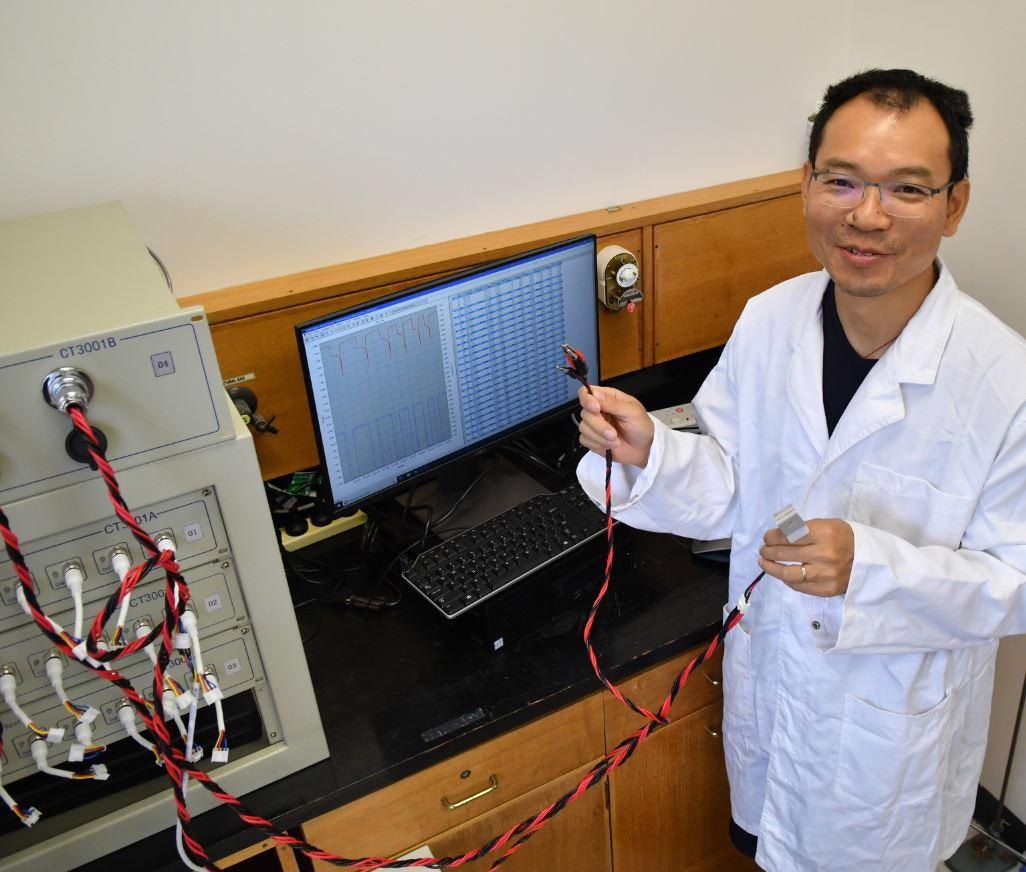Reviewed by Alex SmithApr 25 2022
An international research group has inched closer to creating a more sustainable, rechargeable “organic” battery model by doubling its capacity of energy storage.
 Dr. Zhongfan Jia developing better battery storage capability for electroactive polymer “organic radical batteries” at his Flinders University laboratory. Image Credit: Flinders University.
Dr. Zhongfan Jia developing better battery storage capability for electroactive polymer “organic radical batteries” at his Flinders University laboratory. Image Credit: Flinders University.
Scientists at Flinders University along with Chinese collaborators employed a catalysis strategy to generate two-electron storage in organic radical batteries, or “ORBs” — a major advancement in improving storage capability. The scientists aimed to power small electronic devices and avert harmful waste from landfills.
In comparison to current metal-based batteries, the evolving rechargeable battery technology utilizes more environmentally friendly materials. To reduce reliance on lithium and cobalt mining, ORBs can be made from sustainable organic compounds. These rare materials are rarely recycled in modern batteries, and they end up in landfills.
Furthermore, since ORBs have a lower capacity than commercialized lithium-ion batteries, their adoption in the electronics and other small device markets has been limited thus far.
According to earlier research, the materials can only store one electron reversibly, giving the battery a maximum capacity of 110 mAh/g.
Catalysis has been widely used in lithium-based batteries such as lithium-oxygen batteries and lithium-sulfur batteries to improve their energy and power performance.
Dr. Zhongfan Jia, Senior Lecturer and Research Leader, Chemistry, Institute for Nanoscale Science and Technology, Flinders University
The researchers first tried this strategy with ORBs, and they were able to accomplish reversible two-electron storage in a polymer-based ORB.
Dr. Jia’s research group recently announced the development of an all-organic polymer battery with a cell voltage of 2.8 V, one of the highest in organic batteries. This work has now increased the energy storage capacity by a factor of two.
This battery can deliver a capacity of 175 mAh/g, which is comparable to the commercialized lithium-ion battery, making a step closer to the practical use of ORBs. Our next goal is to combine these advances to develop organic batteries that can be implemented in consumer electronics.
Dr. Zhongfan Jia, Senior Lecturer and Research Leader, Chemistry, Institute for Nanoscale Science and Technology, Flinders University
Journal Reference:
Li, W., et al. (2022) Anthraquinone-Catalyzed TEMPO Reduction to Realize Two-Electron Energy Storage of Poly(TEMPO-methacrylate). ACS Energy Letters. doi.org/10.1021/acsenergylett.2c00063.